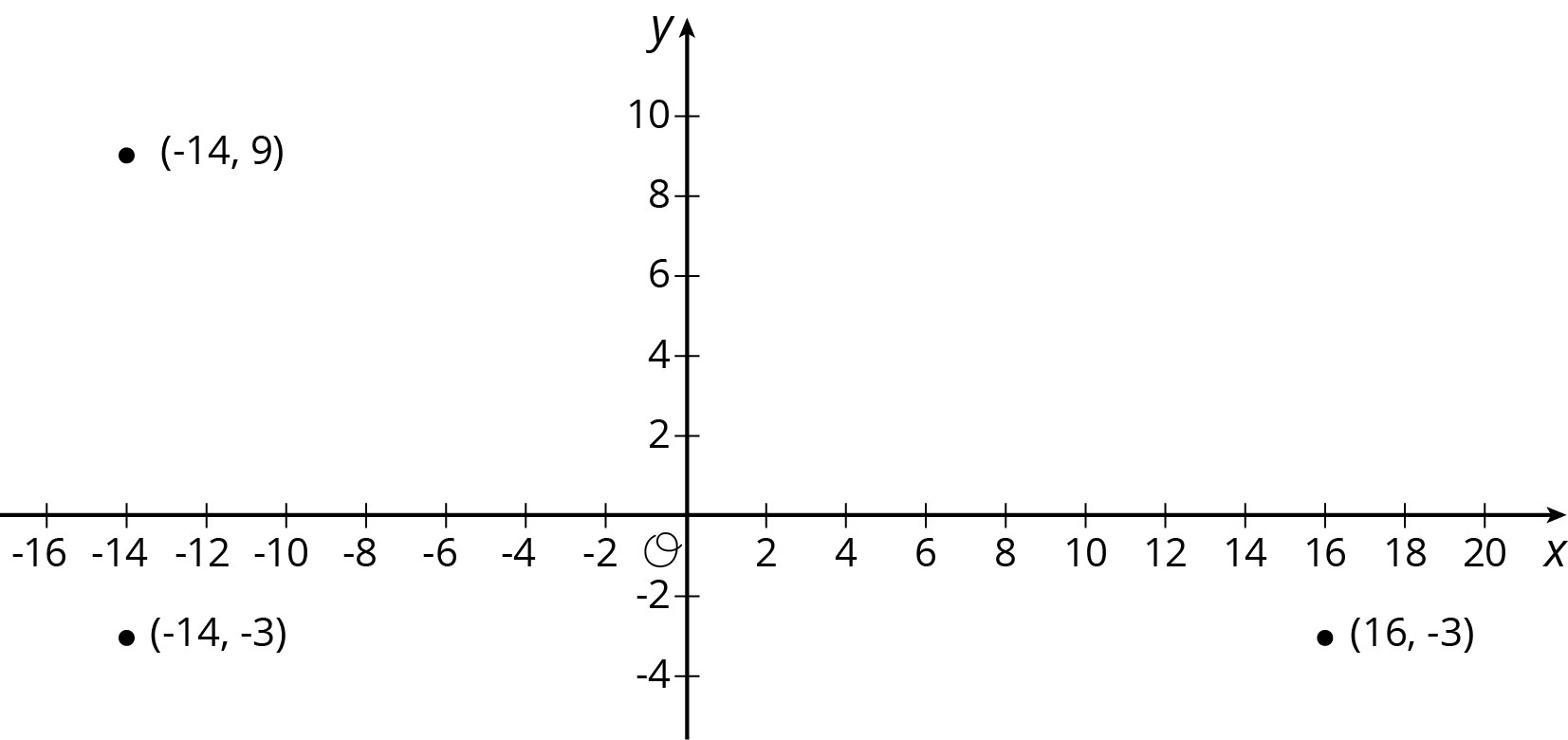We can use the Pythagorean Theorem to find the distance between any two points on the coordinate plane. For example, if the coordinates of point $A$ are $(\text-2,\text-3)$, and the coordinates of point $B$ are $(\text-8,4)$, let’s find the distance between them. This distance is also the length of line segment $AB$. It is a good idea to plot the points first.
Think of the distance between $A$ and $B$, or the length of segment $AB$, as the hypotenuse of a right triangle. The lengths of the legs can be deduced from the coordinates of the points.
The length of the horizontal leg is 6, which can be seen in the diagram, but it is also the distance between the $x$-coordinates of $A$ and $B$ since $|\text-8-\text-2|=6$. The length of the vertical leg is 7, which can be seen in the diagram, but this is also the distance between the $y$-coordinates of $A$ and $B$ since $|4 - \text-3|=7$.
Once the lengths of the legs are known, we use the Pythagorean Theorem to find the length of the hypotenuse, $AB$, which we can represent with $c$. Since $c$ is a positive number, there is only one value it can take:
\(\begin{align} 6^2+7^2&=c^2 \\ 36+49&=c^2 \\ 85&=c^2 \\ \sqrt{85}&=c \\ \end{align}\)
This length is a little longer than 9, since 85 is a little longer than 81. Using a calculator gives a more precise answer, $\sqrt{85} \approx 9.22$.



